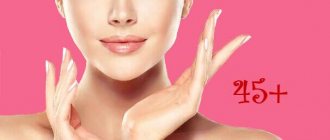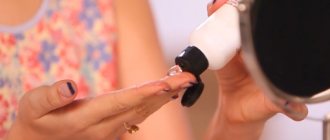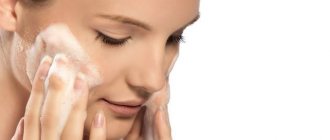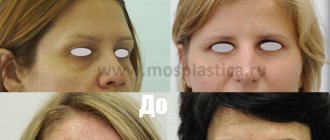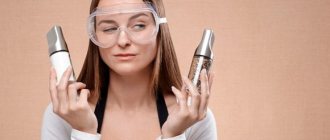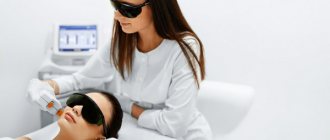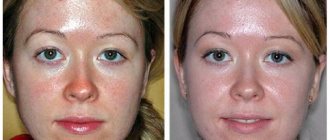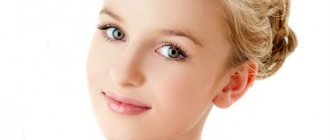Many modern women prefer to combine peeling and biorevitalization, since together these procedures have a pronounced rejuvenating effect. This combination is beneficial for skin of any age, but most often cosmetologists recommend it to patients after 35 years of age, because skin aging processes accelerate from this age.
In order not to cause harm to the skin instead of benefit, you should know how long after biorevitalization you can go for hair removal.
The essence of peeling and biorevitalization
Before identifying the essence of both procedures, it is necessary to understand what goals each of them pursues. The end result, as a rule, is the desire to achieve improvement and noticeable rejuvenation of the facial skin. Modern cosmetology has several techniques used to solve such problems.
One of these methods includes biorevitalization . The complex term hides the well-known injections of hyaluronic acid (hyaluronate). The essence of the technique is to saturate the deep layers of the dermis and epidermis with non-sulfonated glycosaminoglycan, which is part of connective, epithelial and nervous tissues. Transportation of hyaluronate components together with vitamin complexes is carried out through injection or laser implementation of a special gel.
See also...
✅ Facial biorevitalization: description of the procedure, advantages and disadvantages
✅ Facial soda: mask, peeling, scrub
✅ Facial peeling roller: rating of the best!
✅ How often can you do facial biorevitalization?
The beneficial properties of hyaluronic acid include the following:
- Stimulation of regeneration processes in the dermis and epidermis;
- Activation of the natural production of elastin and collagen;
- Reduced activity of the sebaceous glands;
- Smoothing out small wrinkles;
- Normalizing metabolic processes in skin tissues.
To make the effect of the biorevitalization procedure last longer, a course of several injections of the drug is usually prescribed. The duration of the course is determined by a cosmetologist based on the condition of the patient’s skin, her age and body characteristics.
Step by step biorevitalization looks like this:
- The cosmetologist thoroughly cleanses the client’s face using one of the available methods;
- An anesthetic cream is applied to the facial skin for 20 - 30 minutes. This will help reduce pain during injection of the drug into the skin tissue;
- The drug is injected under the skin with a thin needle or using low-intensity laser radiation. The first technique is considered more effective, but it is also more painful.
Often, patients after injection biorevitalization complain of the appearance of hematomas and small swellings on the face (papules). But this is a completely common phenomenon that will go away on its own over the next 1 to 2 days.
Unlike biorevitalization, during deep cleansing of the facial skin, which is peeling , the transport of substances into the tissues of the epidermis and dermis does not occur. Instead, the cosmetologist removes dead epithelial cells chemically or mechanically. In other words, peeling is a forced “launch” of natural metabolic processes in the skin by exposing young and healthy cells. Thanks to this, cellular respiration is stimulated, and beneficial substances enter the skin tissue faster and more actively.
For deep cleansing of the skin, special high-concentration acid preparations are used, the use of which should only be carried out by a specialist. It is not recommended to perform the procedure at home, as this can result in damage to the epithelium and the appearance of burns.
Another popular option is the retinoic or "yellow" peel .
It involves exposing the skin to retinoids - artificial analogues of vitamin A. This facial cleansing technology is more gentle: with it, concentrated retinoic acid (tretinoin 5% or 10%) is applied to the skin for a quarter of an hour, as a result of which an occlusive layer is formed on it and, in During this process, the uniform production of tretinoin is stimulated. Typically, a course of “yellow” peeling includes at least four procedures, repeated at intervals of 2 to 4 weeks.
Is it possible to do facial cleansing after mesotherapy?
Mesotherapy is absolutely not a contraindication to facial cleansing, so you can combine techniques - if they are performed with a break of 1-2 weeks.
However, in this case, the question arises of the effectiveness of facial cleansing after the introduction of meso-cocktails. The drugs help awaken natural processes and often have anti-inflammatory and antioxidant properties. Because of one of the indications for the procedure, acne, post-acne, and enlarged pores are often prescribed.
But cleansing your face before mesotherapy will help you increase the effectiveness of the technique by eliminating previously keratinized epithelial cells. Thanks to this, the rate of absorption of nutrients will increase.
Is it possible to combine?
Biorevitalization has its own characteristics, as does the procedure for deep skin cleansing, and the indications for them are different. Thus, facial peeling is carried out even for adolescents under the age of 18, since it is during puberty that they encounter dermatological problems such as rosacea, acne, acne and increased oily skin. But injections of hyaluronic acid are not indicated for persons under 30 - 35 years old , unless there are special indications for their use.
Most often, when asked whether it is worth combining biorevitalization and peeling, cosmetologists give a negative answer .
The impact on the skin during both procedures is quite traumatic and requires some time for natural regeneration. Therefore, if in any salon you are offered to combine them in one visit, we advise you to refuse and look for another place for cosmetic treatment.
Features of the technique
Mesopeeling involves injecting a special drug into the skin 1–2 mm, as in mesotherapy. The drug contains 3 active components:
- 1% glycolic acid, which will ensure the destruction of lipid bonds with dead cells, will accelerate the division of stem cells and the synthesis of its own collagen and elastin. Glycolic acid is also involved in normalizing the water balance of epidermal cells. It affects the production of melanin and its uniform distribution throughout the skin, which prevents the appearance of age spots.
- Organic silicon particles, which strengthen collagen and elastin fibers, prevent their destruction, and also activate metabolism in cells.
- Procaine acts as a pain reliever. In addition, procaine dilates blood vessels and accelerates the effect of other components on the epidermis.
This whole “cocktail” will be complemented by amino acids, hyaluronic acid and beauty vitamins. They will ensure the activity of cells in matters of regeneration, fill them with energy and normalize their internal work. Thanks to the acid used, these additives will penetrate much deeper, thereby increasing their effectiveness.
Sequence of procedures
The main question that clients who want to undergo facial skin treatment and rejuvenation ask at an appointment with a cosmetologist is the choice of the sequence of actions.
What is the best course of action: undergo peeling and then agree to hyaluronic acid injections or change the order of procedures. There is no definite answer to this question, since the specialist will make a decision on an individual basis, based on the characteristics of your body and skin condition, as well as other factors (age, the presence of certain diseases, taking certain medications, etc.).
Both procedures differ radically in technology, type of effect on the skin and materials used during the process. This is also necessarily taken into account when choosing the sequence and tactics of action.
Why is this stage critical? It all depends on which skin cleansing technology is chosen: retinoic (“yellow”) or chemical peeling. The second option is more traumatic , and after it is carried out, the facial skin tissues remain swollen for a long time. If you inject hyaluronic acid within the permitted period after chemical peeling, the regeneration process will be accelerated, due to which the swelling will go away a little faster.
The effect is explained by the peculiarities of the action of hyaluronic acid, which adsorbs excess liquid remaining in the epidermal cells after chemical cleansing. However, biorevitalization cannot be carried out immediately: a certain time interval must be maintained.
Retinoic peeling has a gentle effect on the skin, so biorevitalization after it is carried out in a shorter time. Already on the third day, the balance of vitamin A in the treated skin is restored enough to create a reliable effect against aggressive external factors.
Peeling before biorevitalization
If you are advised to cleanse your facial skin before administering hyaluronate injections, please note that one of the effects achieved will be a reduction in the period of regeneration of the epidermis after the use of aggressive acids.
The selected procedure diagram will look like this:
- To begin with, the cosmetologist will perform approximately two deep cleanses with glycol at intervals of 7 to 10 days. Thanks to this procedure, the facial skin will be exfoliated from dead cells, and active collagen synthesis will begin in its deep layers;
- Then intermediate injections of hyaluronate are carried out after 4 - 5 days;
- After another 5–6 days, the patient undergoes two peeling procedures again with an interval of a week;
- Having completed all these steps, it again undergoes final biorevitalization 5 days after the last peeling.
With this scheme, a complex effect is achieved, namely: the skin recovery period is shortened, the patient practically does not abandon the usual rhythm of life, and the result of the procedure is noticeable to the naked eye after 15 days.
Biorevitalization before peeling
The chosen method of facial rejuvenation, in which peeling is carried out step by step after biorevitalization, also has its own characteristics. They include a special sequence, number and order of manipulations:
- Hyaluronic acid injections are carried out in three doses, with an interval of 15 days between each procedure;
- After this stage, the patient undergoes retinoic peeling. Recovery after cleansing and how effectively the process of facial skin restoration proceeds largely depends on the conscientious implementation of medical recommendations (we’ll talk about them below), which are mandatory during the rehabilitation period.
It is believed that biorevitalization carried out before peeling will facilitate the skin regeneration process and reduce the risk of side effects and complications.
Is it possible to do it together?
It is strictly forbidden to perform both procedures simultaneously, as they are characterized by a high degree of trauma. Injections of hyalurnic acid after peeling can only be done after the recovery period has been completed, otherwise the risk of complications increases.
Why can our articles be trusted?
We make health information clear, accessible and relevant.
- All articles are checked by practicing doctors.
- We take scientific literature and the latest research as a basis.
- We publish detailed articles that answer all questions.
After what period of time the procedures are allowed to be carried out, the doctor determines. At the same time, he must take into account the characteristics of the epidermis of each woman. As a rule, if biorevitalization is done after chemical peeling, then at least 14 days must pass. When using retinoic acid, the interval is 4-5 days.
Intervals and restrictions
Many patients try to find out on their own, but any responsible cosmetologist, even before the procedure, is obliged to tell you how many days after peeling you can do biorevitalization.
Of course, this time interval should not be very long, otherwise the effect after deep cleansing of the skin will be minimized. The ideal option is to wait about 10–15 days . If you do biorevitalization earlier, it will give an undesirable result, since the skin tissue at this moment is still quite vulnerable. If an atraumatic skin cleansing technology (for example, retinoic peeling) was chosen, the waiting period can be reduced to a week or even five days.
When undergoing chemical peeling, the interval between procedures should be from a week to 15 days. It is better to wait the maximum recommended time, since regeneration of the epidermis after dry cleaning takes quite a long time. If you undergo hyaluronate injections at an earlier date, erythema may develop.
There are certain restrictions imposed on a patient who has undergone a combination of both procedures. This list includes special recommendations, ignoring which may reduce the effect of injections and deep cleansing of the skin:
- Skin exposed to traumatic effects is prone to hyperpigmentation, so before going outside, you should apply protective products with a high SPF factor to your face. This measure must be observed for a month after the procedures, but for skin health it is better to protect it from the negative effects of ultraviolet rays on an ongoing basis. You must refrain from visiting the solarium for at least 15 days;
- While the skin is recovering after visiting a cosmetologist, do not use harsh peels and scrubs, face masks and creams. In order not to provoke the development of a spontaneous allergic reaction, do not try new beauty products and cosmetics for a month;
- Keep antihistamines in your home medicine cabinet at all times. This is a necessary measure for everyone, not just those who are prone to allergies. If, during the recovery period, rashes, erythema and swelling appear on the facial skin due to an allergic reaction, this may negatively affect its condition and negate the effect of peeling and biorevitalization;
- For a week after the procedure, do not expose yourself to physical activity (especially weights). Increased physical activity contributes to a rush of blood to the skin of the face, and this is undesirable;
- For 2–4 weeks, any additional cosmetic and/or plastic correction interventions on the facial skin are prohibited;
- In the first weeks after the procedures, avoid visiting the bathhouse and sauna;
- During the recovery period, stop taking B vitamins.
Special care during the period of papules after biorevitalization
During biorevitalization using the papular method, a filler based on hyaluronic acid is injected under the skin, into its upper layers. To ensure uniform and gradual absorption of this elixir of youth by the tissues, punctures are made in equal increments of approximately 1 cm.
As a result, after the procedure, small swellings filled with contents – papules – remain visible. These bumps are painless to the touch, do not cause itching, and do not cause physical discomfort, however, seeing their reflection in the mirror, many clients question the actions of the cosmetologist and are concerned about the chosen tactics.
In the case of the papular technique, such temporary consequences of biorevitalization as papules are a pattern that, after the resorption of hyaluronic acid, will disappear without a trace. The fact is that in the dense tissues of the dermis, beneficial substances cannot be absorbed instantly; this process takes time, even for microdoses.
Skin care in this case does not differ from daily care, taking into account some precautions regarding aggressive washes and decorative cosmetics. If the injections are administered linearly - short or fan-shaped, the active base of the filler enters the deeper layers of the dermis
The appearance of papules with this technique is a manifestation of an allergic or stress reaction of the skin to microtrauma after injections. The tubercles can be colorless or reddish, with a dense and liquid consistency. The lower third of the face is especially susceptible to this, in places where the skin is usually thinned
If the injections are administered linearly - short or fan-shaped, the active base of the filler enters the deeper layers of the dermis. The appearance of papules with this technique is a manifestation of an allergic or stress reaction of the skin to microtrauma after injections. The tubercles can be colorless or reddish, with a dense and liquid consistency. The lower third of the face is especially susceptible to this, in places where the skin is typically thin.
Papules are a common consequence of biorevitalization, of which not a trace remains after a few days, unless the condition is aggravated by:
- Touch your face with your hands.
- Try to speed up the process using methods such as squeezing and cauterization.
- Do not use protective equipment.
- Apply decorative cosmetics in the same amount.
- Do not monitor the cleanliness of the dermis.
Ignoring simple rules can lead to trouble, especially as it concerns the face - inflammatory foci may form, the traces of which will look like purple scars.
For the impatient, there are still ways to speed up the process of disappearance of papules. After consulting a cosmetologist you can:
- Use special products designed for skin care after biorevitalization.
- Start taking vitamin K beforehand, which will prevent excessive swelling and puffiness.
- Cream Lyoton.
- Absorbable masks based on mountain arnica.
To remain satisfied with the result of biorevitalization, a procedure that is aimed exclusively at improving appearance, giving the image freshness and youth, the main thing is not to make mistakes during the rehabilitation period, trying to speed up the transformation
It is important to move towards your goal with systematic progressive actions, reinforcing the cosmetologist’s manipulations and listening to these recommendations
Incredible! Find out who is the most beautiful woman on the planet in 2020!
L oading. . .
Which sequence is better to choose?
The optimal alternation of facial cleansing and biorevitalization procedures is the one that suits you personally. Each patient has his own characteristics of the body; there are no general recommendations. There is an opinion that the correct sequence of procedures should be determined after at least two consultations with an experienced cosmetologist. The specialist will not only select techniques for your specific case, but will also set the necessary time frames between each stage.
That is why you should not expect a definite answer to the question of what is better – peeling or biorevitalization. Both procedures have different effects on the skin of the face, so it is incorrect to look for their advantages and disadvantages in comparison with one another.
When preparing the material, consultation was carried out by:
Olga Kirilova (cosmetologist). A specialist with higher medical education and extensive work experience. Helped hundreds of patients cope with various skin problems. Conducts non-hardware and hardware procedures. Proficient in laser and phototherapy techniques.
Share with your friends!
Subscribe to our Yandex.Zen channel or Yandex.Messenger
What's better
These two cosmetic procedures cannot be compared with each other, since they are completely different. Peeling affects the superficial layers of the skin, while the second one is aimed at working with the deeper dermal layers. It is better to complement one method with another, which will allow you to get a more pronounced result.
The need for a complex procedure, as well as their sequence, is determined. It cannot be argued that peeling is better than biorevitalization or, vice versa, since both manipulations are completely different from each other.
Fillers and laser treatments – when is this combination possible?
Fillers and laser resurfacing are a great combination of treatments for skin rejuvenation. Their combined effect is associated with the impact on different skin layers:
- Fillers work deeper than the laser, filling folds, deep wrinkles and correcting facial features.
- Resurfacing – removes the top layer of skin along with old cells, age spots, superficial wrinkles, and acne marks.
Although the combination of these two methods works great, cosmetologists advise doing laser resurfacing first and only then injecting filler. The results of using fillers may change due to thickening of the skin after the laser. This effect is caused by an increase in the production of collagen and elastin proteins, which form the basis of the skin.
Deeper laser treatments do not work well with filler injections. The laser tends to heat the water, causing it to evaporate, so the filler may be destroyed during the procedure.
The laser does not have a negative effect on all fillers:
- Preparations based on hyaluronic acid are sensitive to laser beams, since their action is based on the ability to attract liquid. The laser heats the water, which causes it to evaporate and reduce the effectiveness of the filler.
- Fillers based on polylactic acid are injected deeper, so the laser does not reach them, and the likelihood that the drug will be destroyed during the procedure is extremely small. In addition, the action of these substances is not based on the attraction of water, so laser beams have little effect on them.
- Fillers based on calcium hydroxyapatite are less susceptible to laser exposure. They are deeply inserted, do not attract water and have a dense structure that the laser beam cannot affect.
This was confirmed by studies conducted in the USA and Israel, which tested the laser resistance of popular fillers.
You should inform your cosmetologist about your desire to combine laser procedures and the introduction of fillers, who will select a drug that is not destroyed by the laser.
Combination of filler and laser resurfacing before and after
Fillers and aesthetic plastic surgery
Plastic surgeries are often complemented by the introduction of fillers. Fillers correct the results obtained, eliminating minor defects left after plastic surgery.
With the help of drugs that serve as fillers and at the same time enhance the production of collagen and elastin proteins, it is possible to slow down the aging process, maintaining the rejuvenating effect of plastic surgery longer. Therefore, the combination of fillers and aesthetic surgery is justified and rational.
Specialists often combine filler injections with other cosmetic methods that improve and rejuvenate the condition of the skin. The clinic’s cosmetologist will select a set of such procedures that will allow you to get an impeccable appearance.
Share link:
Fillers and radiofrequency treatments
Radiofrequency exposure is a common technique used to sculpt the face and body. Scientific studies conducted at the Amore Pacific Corporation Research and Development Center, Yongin, Korea and Seoul University have shown that the injection of fillers after exposure to radio waves produces good results. However, in this case, you need to wait for tissue recovery after the procedure.
During radiofrequency treatment, excess fat cells are removed, which causes the effect of liposuction. However, in some areas it is necessary to add the missing volume using fillers, so cosmetologists actively use them.
Skin tightening after radiofrequency treatments has a beneficial effect on the results obtained with fillers, especially those containing hyaluronic acid. Combined rejuvenation prolongs the period of stay of the filler in the tissues and reduces the volume of filler required to obtain the desired result.
Combination of filler and radiofrequency treatments before and after
The use of radio frequencies together with filler helps get rid of deep wrinkles and maintain the results for as long as possible.
Who should not undergo carbon peeling?
Since carbon skin cleansing is a hardware procedure, contraindications to its implementation always remain. These include:
- Skin damage in the treatment area, exacerbation of herpes.
- Exacerbation of a chronic disease (preliminary consultation with your doctor is required).
- A diagnosed malignant tumor, regardless of its location.
- Pathologies of blood vessels and heart, low blood clotting, diabetes mellitus.
- The proximity of blood vessels to the surface of the skin.
- Acute infectious condition (for example, acute respiratory viral infections, acute respiratory infections).
Carbon peeling is not recommended for women expecting and breastfeeding.
Thus, non-invasive laser carbon peeling is a great way to transform yourself quickly and without much hassle (this can be done, for example, on a weekend). Moreover, the effect will be noticeable after the first procedure, and the lasting result after a course of peelings lasts up to 3 months. For all this to become a reality, it is necessary to choose a qualified specialist who has good skills in working with a laser, and therefore will do everything competently and without violating the methodology.
The consequences of mesotherapy are nonspecific
- Pain - with any damage to the skin, pain receptors are irritated, so there may be a pain reaction of varying severity. Its strength depends on individual pain sensitivity, the pH of the injected drug, the area of therapy, and the quality of the needle. Some patients tolerate the procedure quite calmly without pain relief, which is better for the subsequent effect of mesotherapy, according to the doctrine of the mechanism of action. For the category of particularly sensitive people and simply for psychological peace, you can offer local pain-relieving ointments such as “Emla”. But we must remember that the ointment begins its analgesic effect 20 minutes after application, and maximum pain relief will occur only an hour after applying the ointment. So, arrive early for your procedure to really get the maximum pain relief.
- I have already written that the least painful is the administration of hyaluronic acid preparations, and the most painful are vitamins and DMAE. This is due to the pH of the drug, if it is much lower or higher than pH 7.2-7.4, then pain will always be felt when such a drug is administered. Both the diameter of the needle and its sharpness matter. Therefore, during the procedure, it is recommended to change needles more often, they quickly become dull, and, if possible, choose thinner ones. If we talk about the site of injection of the drug, the most sensitive are the back and inner thighs, the nasolabial fold and the middle area of the face.
- Redness at the injection site is a completely normal reaction associated with the vascular reaction to the injection. It usually goes away on its own within 15-30 minutes; in smokers it lasts longer - up to 45 minutes.
- You can quickly relieve this reaction by applying a special soothing mask after mesotherapy. The mask must be sterile, specially packaged and intended only as a mask after mesotherapy. Cream soothing masks should not be applied immediately after the procedure.
- Swelling will also always be a response of the skin to the injected drug and to injury. It depends on the drug administered, for example, after the administration of hyaluronic acid and other gels, the swelling is more pronounced, since these drugs themselves attract water. Swelling may persist for a day and goes away on its own.
- Hemorrhages - a wide variety, from a pinpoint reaction to a needle prick to hematomas - occur with deep administration of the drug, with increased fragility of blood vessels, with a decrease in blood clotting in the patient.
- Unfortunately, it is not possible to completely guarantee that the vessel will not be damaged and there will be no “bruising”. The risk of developing hematomas increases during menstruation, when applying anesthetic ointment, when taking certain medications, such as aspirin, preparations based on ginkgo biloba, green tea, vitamin E. Their use should be stopped the day before the procedure. When administering solid preparations, the risk of hemorrhage is also higher than when administering aqueous solutions.
- What to do if a hemorrhage occurs? Press the bleeding site with your finger, apply cold, use absorbent ointments - “Traumel”, heparin, troxevasin, “Bruise-off”, other masks based on bodyaga, Arnica ointment. It is better to limit yourself to Arnica ointment and Traumeel, because thistle causes peeling of the skin, acting as a peeling.
- Vagal syndrome - what is it? Sometimes, as a response to pain, cold extremities, dizziness, and decreased blood pressure occur - these symptoms are associated with irritation of the vagus nerve and are stopped by the administration of a special drug.
Fillers and Botox – a double blow to wrinkles
These two rejuvenation methods work great together because they work on different types of wrinkles:
- Botox removes dynamic wrinkles caused by facial expressions. Such folds appear when you frown, smile, or squint, and disappear when the facial muscles relax.
- The filler smoothes out static wrinkles that appear due to age-related changes and do not depend on facial expression. They are visible regardless of the condition of the facial muscles. Dermal fillers also restore lost tissue volume, creating a more defined facial contour.
When Botox and dermal fillers are combined, botulinum oxin preparations are typically used around the eyes and forehead, and dermal fillers are used on the middle and lower areas of the face. Using Botox and fillers together can prolong the results of treatments. Hyaluronic acid, contained in many fillers, is destroyed by moving facial expressions, so the decrease in the activity of facial muscles that occurs after Botox injections allows facial skin to remain smooth and youthful longer.
Combination of Botox and dermal fillers before and after
Jessner peeling - expert review
“This is not a procedure where you can come to a beauty salon and “order” it at your own discretion,” notes Olga Degtyareva. — Here you need to consult with a cosmetologist, who may suggest performing this particular type of peeling. And perhaps he will advise replacing it with other procedures, for example, biorevitalization or mesotherapy. They are often performed as a preparation for Jessner peeling, but sometimes it turns out that mesotherapy is quite enough to achieve the required result, and the peeling itself is no longer necessary. Therefore, first of all, you need to consult a cosmetologist.”

